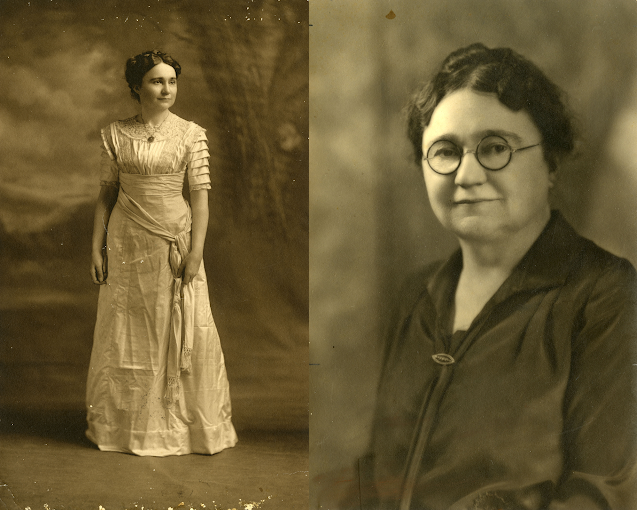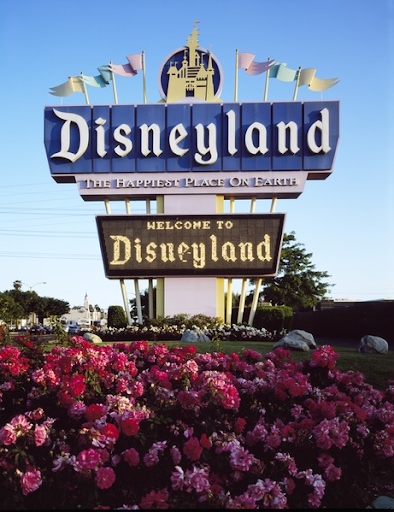My career in college journalism began in the fall of 1984, when I was a first-year. Little did I know when I started out writing articles and taking photographs for The Guilfordian that the camera and darkroom especially would come to define my entire college experience. I also very early on got a taste for the problems of journalism at Guilford College, primarily being a lack of staff and an overwhelming workload for those left behind to complete all of the projects.
There was no college credit, no advisor and no incentive whatsoever to put out a paper every week with our two-person staff, other than a stipend each semester that amounted to $25–50. After a couple of months, the editor-in-chief of The Guilfordian quit, and I moved over to the Quaker, the Guilford yearbook, because there was a lot more energy coming from the editor. He and I saw eye to eye on what the level of quality of the publication should be, and I was glad to process film and print hundreds of photos, things that I really enjoyed. (Note: There were no digital cameras available to the public until sometime around the late ’90s.) The book was a success, something we could all be proud of.
Working intensely on the 1986 Quaker gave me the experience I needed to do a book of my own. The ’86 book would be my last work until 1988, since I didn’t do any journalistic activity in 1987 for reasons I won’t go into here.
We had a great staff. I did most of the photography, while a couple of others did the text. I never went anywhere without my orange camera bag. Again, I spent a huge amount of my time in the darkroom, seemingly all the time I wasn’t shooting. It was a daunting amount of work, but I was energized by it. This book, too, was a success; it was very gratifying to have put it together with our small staff of four through sheer dedication.
Forward to the spring of 1987, when I was interviewed by the Publications Board for the Editor-in-Chief position for the 1988 Quaker. I had a good resume. I remember the interview being easy, although that may have been because I was the only one who applied.
The biggest hurdle was getting funding from the Community Senate. If I didn’t get the funding I wanted, I couldn’t do what I wanted to do, which was a big book — about 100-125 pages larger than had been typical — full of large photographs, not a bunch of tiny ones whose content couldn’t be discerned. I also wanted to buy a computer, so I could dispense with the typewriters of the past (yes, typewriters) and type all the text in the ancient version of Microsoft Word that was then available, although it seemed perfectly modern at the time, and I needed a printer. I wanted to buy a laser printer, new technology at the time. A laser printer weighed about seventy pounds, and the quality of the output wasn’t terrific, but it was state of the art. I didn’t want to be stuck with a dot-matrix printer. I was prepared with detailed notes for my budgetary interview. I remember having a twinge of apprehension because it was so important. My most important prop was the yearbook of Vanderbilt University, a medium-sized school in my hometown. It was four hundred pages, nearly all of it color.
When I was asked what I wanted to do with the Quaker, I whipped out my prop and started flipping through its hundreds of pages of color, and that sealed the deal. My apprehension must not have shown because I asked for about $50,000, and that’s what I received, Apple Macintosh and very heavy Apple laser printer included. I also received funds to upgrade the darkroom and its ancient enlargers.
I started a set of notebooks; one was a detailed layout of the book, one was about staffing and one included long lists and details of all of the tasks which I had to complete. I stayed in Greensboro in my very first apartment working as a Guilford security guard — I don’t think you have those anymore — and spent much of the rest of the time with my notebooks. I could see the whole thing completed in my head even at that early stage, so there were really no surprises with regard to content and layout as things progressed. All of the surprises came in other areas.
After a long, dull summer as a security guard, the fall of 1988 finally arrived. As in 1986, I never went anywhere without my camera. I shot who knows how many hundreds of rolls of film, black and white and color. This yielded thousands of images.
I remember very clearly being overly optimistic about staffing, meaning I thought I was going to have a staff of at least 12 to 15 people. I engaged in a furious promotional campaign with signs everywhere. I even put cards in every dorm room, inviting the students to join the Quaker staff.
When the first staff meeting rolled around, four freshman girls showed up.
I knew I wanted to do the majority of the photography on my own, but I wanted a staff to deal with the writing. My “staff” wasn’t interested in photography, and when I assigned pieces for them to write, they didn’t show up with anything the next week.
Early in 1988, I fired the staff.
It was as though a great weight had been removed from my back. Not being able to recruit anyone to help meant the quality of the writing was not what I would have wanted, but even today, I can’t think of any way around the problem I faced in this area.
Much more cooperative was the student body. I was well-known and trusted with the camera from previous years, and when it came time to do the shots of the seniors and underclassmen, I was overwhelmed with requests for time slots for photos. I put up sign up sheets in the Founders lobby and did the shooting for weeks and weeks in the fall of 1987 with additional shooting in the spring of 1988. I had to expand the underclassman section to just about a hundred pages.
In the evenings, I would process film and print, and on Sundays, I would layout pages — a completely manual process using a ruler and pen on forms provided by the printer. It was a very backwards process compared to the way things are done today, and it was a laborious process that I did entirely on my own.
And all the while, I also had to shoot sports, events and groups. Getting the names of everyone in every picture and typing them up was a chore, but most of the work gave me a sense of accomplishment, and I made lots of bonds with a large percentage of the student body. These bonds allowed me access into places that I otherwise would never have had access. But, the access also had unintended consequences.
Nudity became what my book was best known for. I thought I was working at a time when showing some body parts would be tolerated, and I thought I was attending at a college known for tolerance and freedom of expression. But, that wasn’t the case.
Photos of Serendipity streakers and a seemingly innocuous six or eight page spread on living off-campus turned into a melee, one which led to wholesale changes to my book, largely in secret by the administration and without my input or even participation.
As I said before, my camera and the student body’s knowledge that I was editor of the yearbook led to my having access to things that an untrusted journalist would never have had access to. During Serendipity, I knew there would be streaking, but I didn’t know when or where until a participant tracked me down and gave me the whole scoop, including when and where it would be — I was even given a map of the exact route drawn by hand. To me, this was consent to use the photos in the yearbook. I was an acquaintance or friend of everyone participating, and I knew that the details of the event wouldn’t have been given to me without the agreement of the other streakers.
In any case, about five minutes before the scheduled time of the event, I got into position, and everything went off exactly as planned. There were a lot of streakers. Still, it happened so fast I had to rely on my autowinder and very quick focusing—I didn’t have an autofocus camera—to record the scene.
Luckily, when I got the film back from being processed, everything was beautifully sharp and detailed and in color. As soon as Serendipity was over, I laid out 16 color pages, some of which were subsequently converted to black and white by the administration and had all of the prints made at a custom color lab in Greensboro, as we didn’t have the facilities to do anything in color in our darkroom and sent everything off to the printer.
Just to be clear, only two or four pages were streakers. The rest were all the other activities that went on during Serendipity. At the time these pages went to the printer, I had absolutely no idea what was to come. Things were starting to wind down, the majority of the book was finished, and I was very pleased with what I had accomplished so far.
The other idea I had, which turned into a catastrophe, was to show what it was like to live in an apartment off-campus as opposed to living in the dorm. While the removal of the streaker photos was instigated by the administration, the removal of the entire eight page section on off-campus living was instigated by one student who, along with her roommates, invited me to her apartment and who willingly participated in the entire escapade.
Everyone involved knew what the photos were for and, at the time, participated enthusiastically. The photo that caused the problem was shot within ten minutes of my arrival. I was taking a photograph of the three roommates together on a couch, and just before I clicked the shutter, the girl in question lifted her shirt. (She had a bra on.)
Frankly, it was fine with me because I wanted the shoot to be as salacious as possible. But it was something she did of her own free will. She was not goaded into doing it. And now, I wish she hadn’t done it because it’s likely that the spread would have been left intact if not for the shirt-raising.
Two days later, on a Sunday morning, I went to another apartment to which I had been invited. This shoot involved two couples who were free and easy with the whole idea. The girls took their shirts off but lay in bed on their stomachs so nothing but backs could be seen. These four individuals were never heard from again, in the sense that they didn’t make any complaints to any officials about the photos or their use.
But at some point, after all or nearly all of the books had been sent to the printer, the Publications Board saw the Serendipity photos, and the girl who lifted her shirt complained either to the Pub Board or some other administrative entity. I was told that parents had contacted the College to complain — what they would have known to complain about is anyone’s guess.
What happened next was that the whole thing became an excuse to decimate the book. The entire off-campus section was removed, even though there were just complaints over one photo, and all but one streaker photo was removed, even though I don’t think there were any student complaints about them. The administration just didn’t want them included. A lot of color photographs were changed from color to black and white. I couldn’t even recount how many were changed. One big one, though, was the cover photo, which was a color photo of someone Jell-O wrestling — it became a negative image in black and white.
The amount of effort put into this book was unimaginable, and a bunch of ignorant people wrecked a great deal of that work.
The last thing the College did was send out a threat from the College attorney’s office, demanding that I return to his office all of my negatives, color slides, and prints “retaining no copies.” This letter was very disturbing to me. I ignored it completely.
Despite all that, doing the yearbook was a rewarding experience. It’s unfortunate that Guilford has discontinued the Quaker. I would be curious to know what the reason was. Perhaps a group of students can lobby to restart it. Just remember: it’s a huge amount of work that requires a dedicated staff, but it’s a huge amount of work with a big payoff.
The 1988 Quaker can be downloaded in a variety of formats at
http://www.archive.org/details/quaker1988guil.





